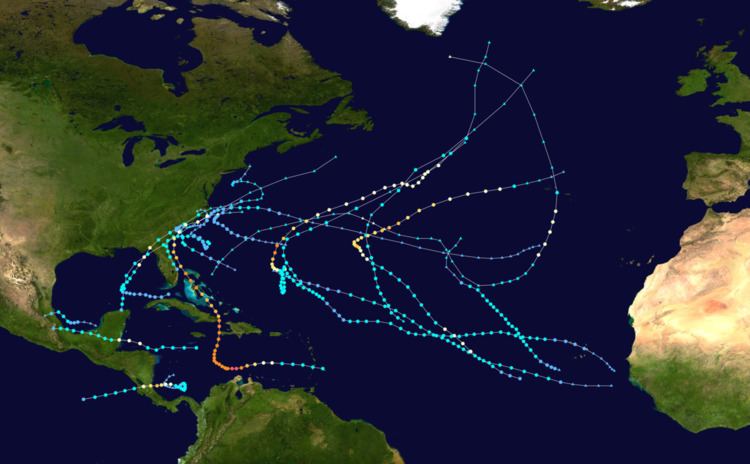 | ||
The 2016 Atlantic hurricane season was an event in the annual tropical cyclone season in the North Hemisphere. The season officially began on June 1, 2016 and ended on November 30, dates adopted by convention that historically describe the period in each year when most systems form. The season's first storm, Hurricane Alex, developed on January 13, marking the first Atlantic hurricane to exist in January since Alice in 1955 and the first to form in the month since 1938. Upon making landfall in the Azores, Alex became the first January landfalling tropical cyclone since Alice. In June, tropical storms Colin and Danielle became the earliest third and fourth named storms, respectively, on record. In August, Hermine moved ashore the coastline of Florida as a Category 1 hurricane, ending the record hurricane drought that began there after Hurricane Wilma in 2005. Late September into early October featured Hurricane Matthew, the first Category 5 Atlantic hurricane since Hurricane Felix in 2007.
Contents
This timeline includes information that was not operationally released, meaning that data from post-storm reviews by the National Hurricane Center, such as a storm that was not operationally warned upon, has been included. This timeline documents tropical cyclone formations, strengthening, weakening, landfalls, extratropical transitions, and dissipations during the season.
January
January 12
January 14
January 15
May
May 27
May 28
May 29
May 30
June
June 2
June 3
June 4
June 5
June 7
June 19
June 20
June 21
July
August
August 2
August 3
August 4
August 6
September
October
October 4
October 6
October 7
October 11
October 12
October 13
October 14
October 18
November
November 20
November 21
November 23
November 24
November 25
November 30
